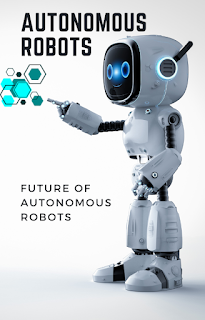Autonomous Robots
Autonomous robots are intelligent machines that can perform tasks and operate in an environment independently, without human control or intervention. These robots are designed to make decisions based on the information they perceive, enabling them to carry out various actions such as starting, stopping, and maneuvering around obstacles on their own[1]. The development of autonomous robots has the potential to significantly impact various aspects of human life, from the workforce to warfare and beyond. In this blog, we will explore the applications, implications, and future of autonomous robots.
Applications of Autonomous Robots
Autonomous robots have a wide range of applications across different industries. Some of the key applications include:
1. Warehouse Automation: Autonomous Mobile Robots (AMRs) are increasingly being used in warehouse operations to move materials around the facility, thereby eliminating unproductive tasks and allowing human workers to focus on more engaging and valuable aspects of their jobs[1].
2. Military and Warfare: There are concerns about the development and use of fully autonomous weapons, also known as killer robots, which could make decisions to use lethal force without human intervention. This raises ethical and legal concerns about the lack of human qualities and emotions in such machines, potentially leading to violations of international humanitarian law[2].
3. Impact on the Workforce: Experts anticipate that automation and intelligent digital agents, including autonomous robots, will permeate various aspects of work and personal lives, potentially impacting up to 50% of jobs by 2025. While autonomous robots can simplify tasks and improve efficiency, they also raise concerns about job displacement and the need for humans to redefine their roles in the workforce[3].
Implications of Autonomous Robots
The development of autonomous robots brings both positive and negative implications for human lives:
Positive Changes
1. Simplification of Duties: Autonomous robots have the capacity to simplify tasks that require time and energy, allowing humans to focus on more meaningful activities. This can lead to improved work-life balance and the ability to invest time in caring for families and social relationships.
2. Error Reduction: Robots are less prone to errors compared to humans, which can lead to increased efficiency and accuracy in various tasks. This can be particularly beneficial in industries where precision and reliability are crucial.
Negative Changes
1. Job Displacement: The increasing presence of autonomous robots in the workforce raises concerns about potential job displacement, as companies may opt to replace human workers with robots, particularly in developed nations.
2. Ethical and Legal Concerns: The use of fully autonomous weapons in warfare raises ethical and legal concerns, as these machines lack human qualities such as compassion and empathy, potentially leading to violations of international humanitarian law.
Future of Autonomous Robots
As technology continues to advance, the future of autonomous robots holds both promise and challenges. It is essential to consider the ethical, legal, and societal implications of integrating autonomous robots into various domains. Additionally, ongoing research and development are crucial to ensure that autonomous robots are designed and utilized in a responsible and beneficial manner.
Autonomous robots have the potential to revolutionize various industries and aspects of human life. While they offer opportunities for increased efficiency and task simplification, it is important to address the potential challenges and ethical considerations associated with their widespread adoption. By carefully navigating the development and integration of autonomous robots, society can harness their benefits while mitigating potential negative impacts.
